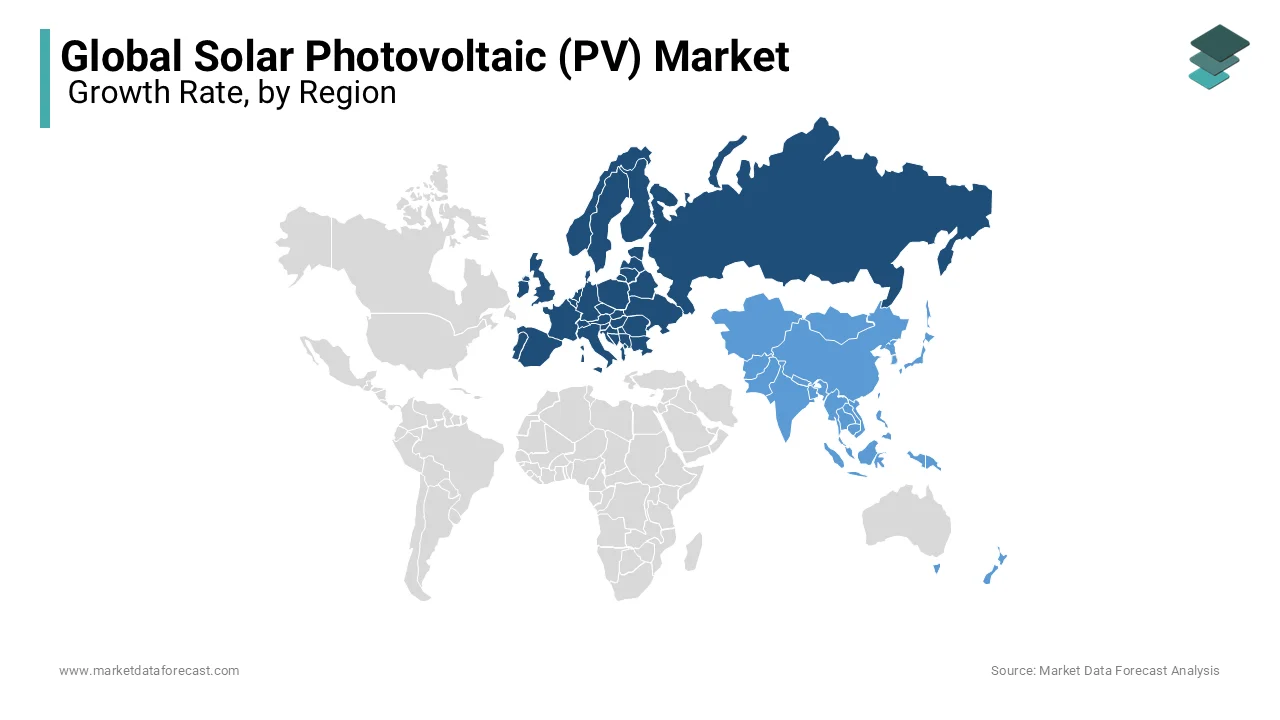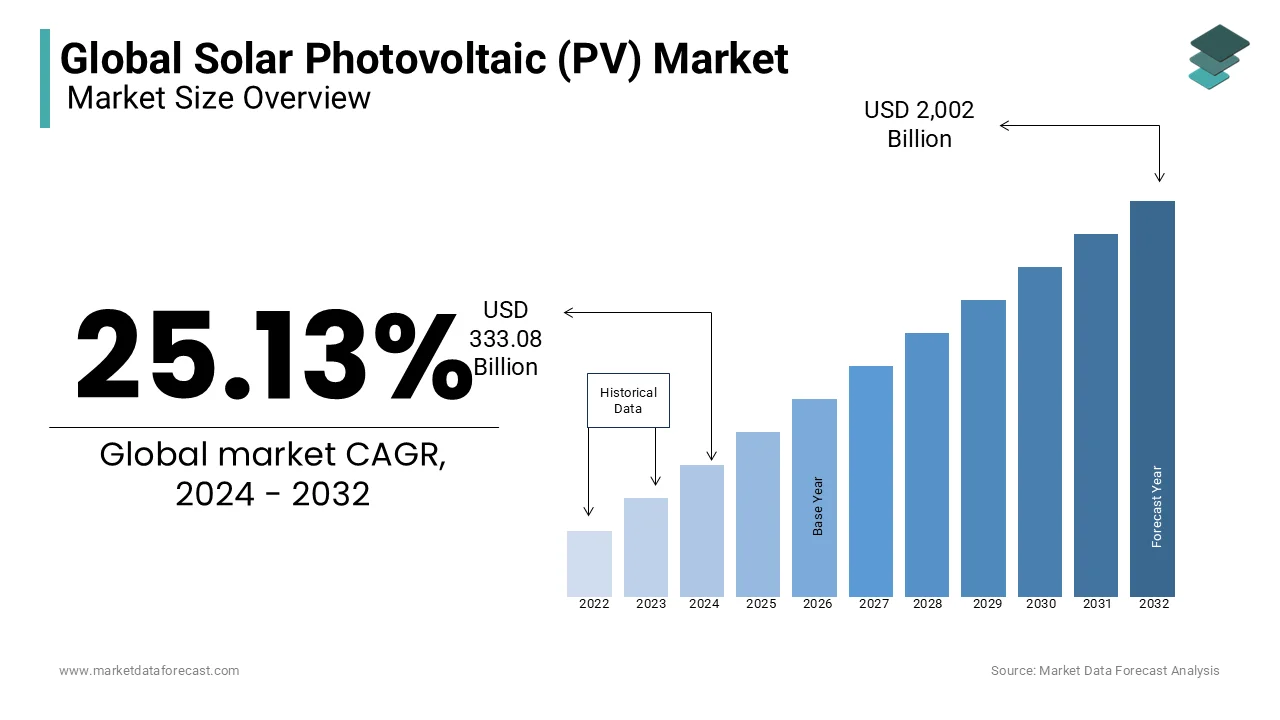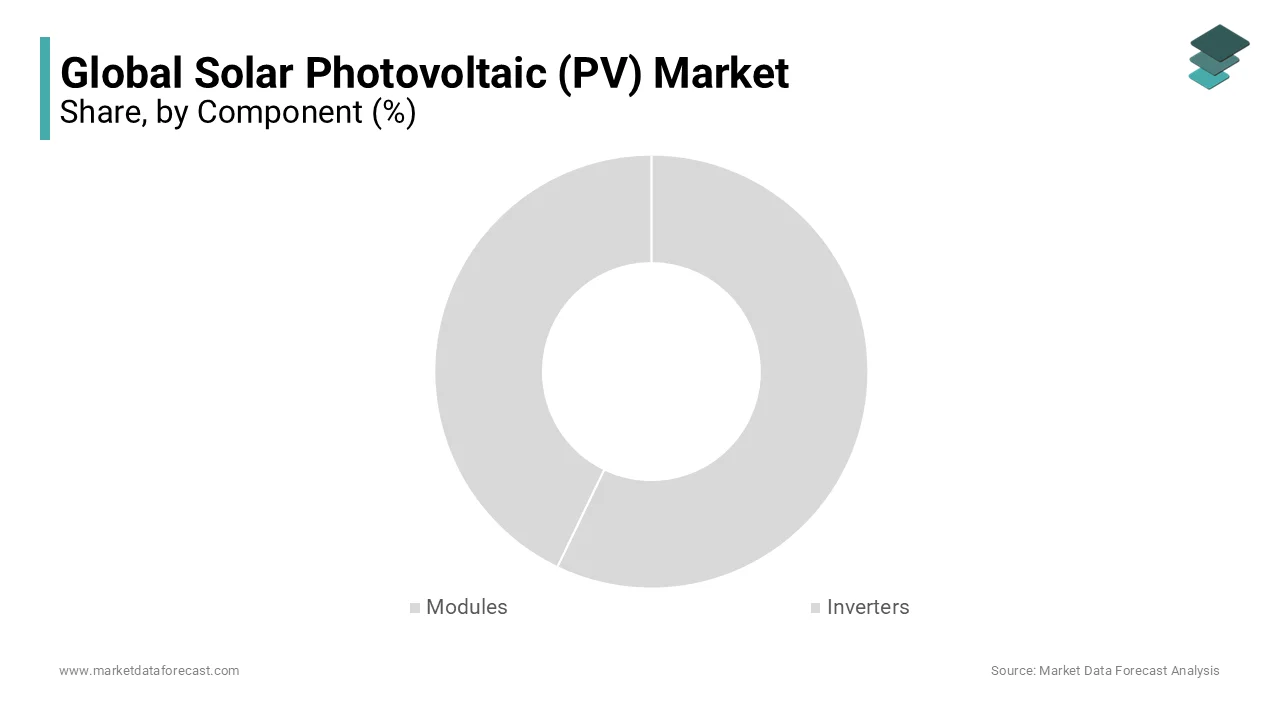Global Solar Photovoltaic (PV) Market Size, Share, Trends, & Growth Forecast Report – Segmented By Component (Modules, Inverters), Material (Silicon, Compounds), Installation Type (Ground Mounted, BIVP), Application (Residential, Commercial & Industrial, Utilities) and Region - Industry Forecast of 2024 to 2032.
Global Solar Photovoltaic (PV) Market Size (2024-2032):
The Global Solar Photovoltaic (PV) Market is predicted to grow from US$ 266.19 billion in 2023 and is anticipated to reach a valuation of US$ 2,002 billion by 2032 from US$ 333.08 billion in 2024 with a current CAGR of 25.13% during the foreseen period 2024 to 2032.
MARKET SCENARIO
The key components of the photovoltaic power system are various types of photovoltaic cells. These components are interconnected and encapsulated to form a photovoltaic module, the module's mounting structure that is manufactured for both on- and off-grid systems. Additionally, solar energy is renewable and helps countries meet their safe, reliable, and affordable energy policy goals. It also provides access to electricity with reduced price volatility and promotes social and economic development. Therefore, the drop in the price of solar energy has further led to the call for solar power generation, which, in turn, proves to be a profitable solution. Photovoltaic (PV) energy is also known as photovoltaic solar energy. There are two types of solar photovoltaic systems: organic photovoltaic and inorganic photovoltaic. Photovoltaics has been a rapidly growing market for the past two decades with an exponential expansion curve. During this period, the solar photovoltaic (PV) system, which was a niche market, has become a common power source for various applications. Solar energy is recognized as a competitive, reliable, and sustainable source of energy, supported by a massive drop in prices in recent years.
MARKET TRENDS
The call for solar energy in emerging markets on all continents, especially in areas where electricity is most needed, is contributing significantly to the expansion of the market. In addition, the rapid expansion of the market is mainly due to the escalated competitiveness of solar photovoltaic energy and escalated government initiatives and programs due to the escalated call for electricity. In addition, countries are turning to the potential of solar photovoltaic (PV) energy to investigate the problems of reducing pollution and CO2 emissions. In addition, the recent introduction of solar PV in countries such as India and China has been supported due to the response to national feed-in tariff (FIT) payments and other incentives that help alleviate chronic power shortages and increase reliability.
MARKET DRIVERS
Rapid population expansion worldwide, a flourishing industrial sector, and strong expansion in infrastructure development have led to a significant increase in the demand for electricity.
Due to the promising economic development of the countries and the improvement of living standards, the call for energy consumption is enormous. As the call for electricity increases, regions around the world are escalating their power generation capacity by escalating the capacity of existing plants or by installing new plants. Due to strict government regulations on carbon emissions, companies are more inclined to use renewable energy sources for power generation and, in particular, solar and wind energy. This is predicted to drive and fuel the expansion of the solar energy market during the foreseen period.
MARKET RESTRAINTS
Photovoltaic installation requires a variety of skilled workers, from university PhDs to R&D level to technicians requiring specialized training and certification and a wide variety of other professionals to support all aspects of the photovoltaic industry. The industry does not have enough qualified installers to handle the implementation of this technology. The availability of skilled labour has been one of the biggest challenges in the field of photovoltaics. On the other hand, the end-users of the technology call for recognized standards, quality assurance, and certification of competencies during the development phase of a photovoltaic installation.
MARKET OPPORTUNITIES
The solar industry has witnessed several rapid technological developments in recent years. Perovskite is a new solar material whose crystalline structure is good for solar absorption. Perovskite cells also perform better than silicon at lower light intensities, in cloudy climates, or indoors, allowing for higher conversion efficiency. The main advantage of making solar cells from perovskite is that the material is cheap and abundant and could produce solar energy cheaply. Perovskite solar cells can also be produced in very thin film architectures with high degrees of transparency, which lends them to a variety of new applications, including building-integrated photovoltaics (BIPV) projects and designs.
MARKET CHALLENGES
Solar or photovoltaic systems for utility applications require large tracts of land. Some estimates show that the land requirements for large-scale PV systems are on the order of 5 acres per megawatt (depending on technology and the availability of sunlight), indicating an increase in the need for electricity in usable land for years to come. This could raise concerns about land degradation and habitat loss in some places. Unlike wind power, there is a minimal chance that solar projects will share land for agricultural purposes. Acquiring operational land is a great challenge, especially in developing countries like India and China, which are the main PV markets.
REPORT COVERAGE
|
REPORT METRIC |
DETAILS |
|
Market Size Available |
2023 to 2032 |
|
Base Year |
2023 |
|
Forecast Period |
2024 to 2032 |
|
CAGR |
25.13% |
|
Segments Covered |
By Component, Material, Installation Type, Application, and Region. |
|
Various Analyses Covered |
Global, Regional & Country Level Analysis; Segment-Level Analysis, DROC, PESTLE Analysis, Porter’s Five Forces Analysis, Competitive Landscape, Analyst Overview of Investment Opportunities |
|
Regions Covered |
North America, Europe, APAC, Latin America, Middle East & Africa |
|
Market Leaders Profiled |
Trina Solar Ltd, Kaneka Corporation, Kyocera Corporation, Panasonic Corporation, Sharp Corporation Ltd, BP Solar International, Bloo Solar Inc., 1366 Technologies Inc., 3GSolar Photovoltaics Ltd., Canadian Solar Inc., JA Solar, First Solar Inc., Jinko Solar Holding Company Ltd, Yingli Green Energy Holding Co. Ltd, Renesola, Sun Power Corporation, Solar World AG, Mitsubishi Electric Corporation, and Others. |
SEGMENTAL ANALYSIS
Global Solar Photovoltaic (PV) Market Analysis By Component
The inverters market is predicted to grow at the highest CAGR during the period 2024-2032. The expansion of the PV inverter market can be attributed to its escalating adoption in residential and utility applications.
Global Solar Photovoltaic (PV) Market Analysis By Application
The residential applications market is predicted to grow at the highest CAGR during the period 2024-2032. This can be attributed to the decrease in the cost of photovoltaic systems in recent years.
REGIONAL ANALYSIS

Europe accounted for a sizeable share of total revenue in 2019, followed by the Asia Pacific and North America. Furthermore, the call for solar photovoltaic panels is escalating in Latin America, mainly in Africa, due to the presence of widely distributed solar resources, and it is predicted to experience significant expansion during the foreseen period. Asia-Pacific is the world's largest solar photovoltaic market, sharing almost 57% of the total solar photovoltaic installation capacity. China, Japan, and India are the key markets in the region that have the share of the maximum installed capacity, which is predicted to increase further during the foreseen period.
KEY PLAYERS IN THE GLOBAL SOLAR PHOTOVOLTAIC (PV) MARKET
Companies playing a prominent role in the global solar photovoltaic (PV) market include Trina Solar Ltd, Kaneka Corporation, Kyocera Corporation, Panasonic Corporation, Sharp Corporation Ltd, BP Solar International, Bloo Solar Inc., 1366 Technologies Inc., 3GSolar Photovoltaics Ltd., Canadian Solar Inc., JA Solar, First Solar Inc., Jinko Solar Holding Company Ltd, Yingli Green Energy Holding Co. Ltd, Renesola, Sun Power Corporation, Solar World AG, Mitsubishi Electric Corporation, and Others.
RECENT HAPPENINGS IN THE GLOBAL SOLAR PHOTOVOLTAIC (PV) MARKET
- Solis launches its 225K solar inverter. The renewable energy industry in India is the subject of aggressive bidding, so the current trend and the requirement for higher capacity PV modules and advanced technology string inverters to maximize plant output and a return are likely investments (ROI) to increase at the same rate.
- UL, a leading worldwide safety science company, announced the launch of a new laboratory to meet the growing call for services from India's solar photovoltaic (PV) industry for testing and certification according to the latest standards of the International Electrotechnical Commission (IEC).
DETAILED SEGMENTATION OF THE GLOBAL SOLAR PHOTOVOLTAIC (PV) MARKET INCLUDED IN THIS REPORT
This global solar photovoltaic (PV) market research report has been segmented and sub-segmented based on component, material, installation type, application, and region.
By Component
- Modules
- Inverters
By Material
- Silicon
- Compounds
By Type
- Ground-mounted
- BIPV
By Application
- Residential
- Commercial & Industrial
- Utilities
By Region
- North America
- Europe
- Asia Pacific
- Latin America
- Middle East & Africa
Frequently Asked Questions
What is the Solar Photovoltaic (PV) Market growth rate during the projection period?
The Global Solar Photovoltaic (PV) Market is expected to grow with a CAGR of 25.13% between 2024 and 2032.
What can be the total Solar Photovoltaic (PV) Market value?
The Global Solar Photovoltaic (PV) Market size is expected to reach a revised size of US$ 2,002 billion by 2032.
Name any three Solar Photovoltaic (PV) Market key players?
Kyocera Corporation, Panasonic Corporation, and Sharp Corporation Ltd are the three Solar Photovoltaic (PV) Market key players.
Related Reports
Access the study in MULTIPLE FORMATS
Purchase options starting from $ 2500
Didn’t find what you’re looking for?
TALK TO OUR ANALYST TEAM
Need something within your budget?
NO WORRIES! WE GOT YOU COVERED!
Call us on: +1 888 702 9696 (U.S Toll Free)
Write to us: [email protected]

